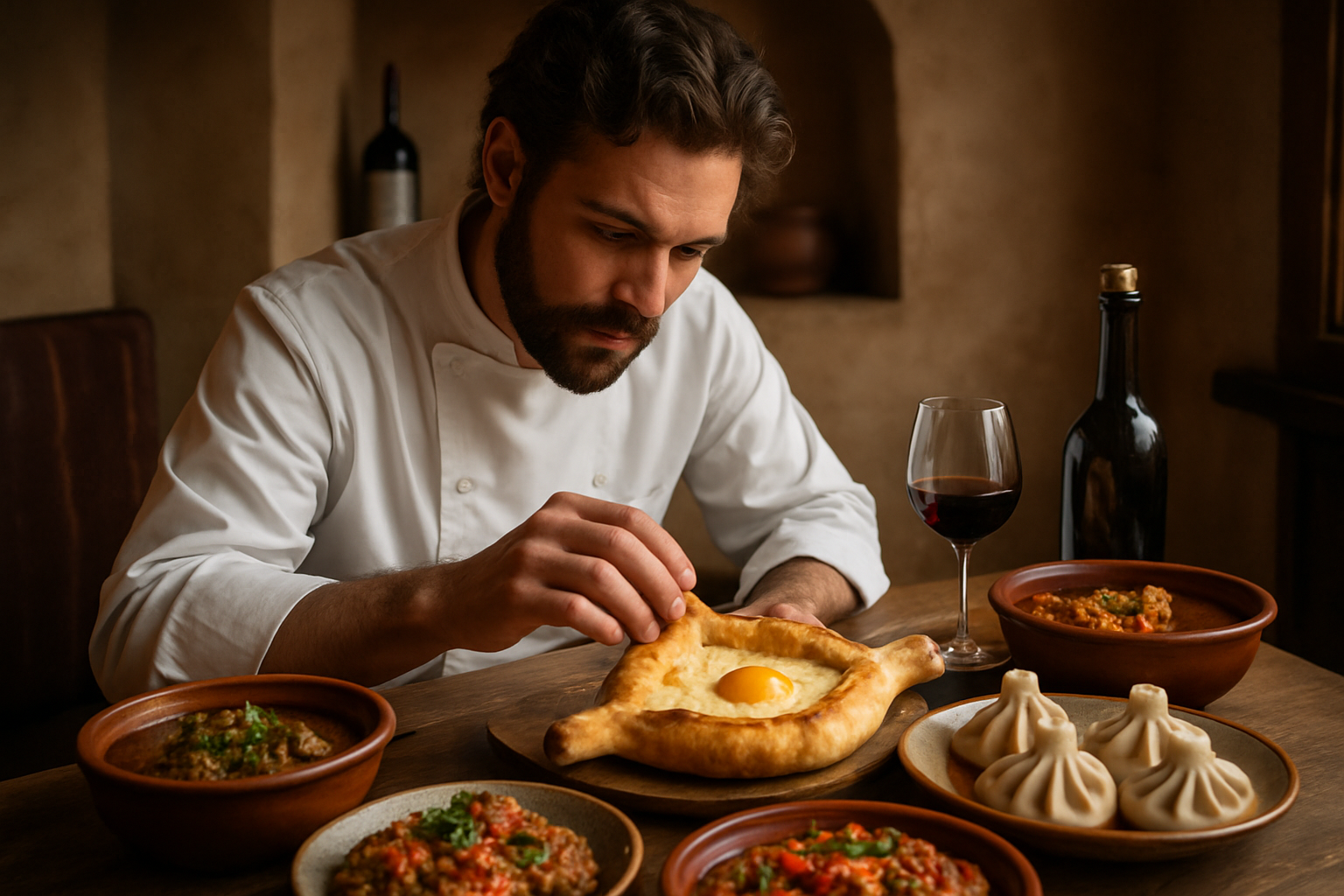Culinary Cartography: Mapping Flavors Across Continents
Embark on a gastronomic journey that transcends borders and tantalizes taste buds. Discover how innovative chefs are reimagining traditional dishes, blending cultural influences, and creating edible masterpieces that tell stories of heritage and innovation. This culinary cartography explores the intersection of global flavors, pushing the boundaries of what's possible on a plate.

The Global Flavor Fusion Revolution
In today’s interconnected world, chefs are increasingly drawing inspiration from diverse culinary traditions, creating dishes that defy simple categorization. This fusion of flavors isn’t just about combining ingredients; it’s about understanding the cultural context of each element and respecting its origins while innovating. From Korean-Mexican tacos to Indian-Italian pizzas, these cross-cultural creations are redefining what we consider “authentic” cuisine. Chefs are now acting as culinary diplomats, introducing diners to new flavor combinations that challenge preconceptions and expand palates. This trend is not only reshaping restaurant menus but also influencing home cooking, as adventurous food lovers seek to recreate these global mashups in their own kitchens.
Hyper-Regional Cuisine: Diving Deep into Local Flavors
While fusion cuisine blends different culinary traditions, there’s a parallel movement towards hyper-regionalism. This approach focuses on showcasing the unique ingredients and techniques specific to a particular area, often diving deep into micro-regions within countries. For example, instead of broadly offering “Italian cuisine,” restaurants are now specializing in dishes from specific towns or valleys in Italy. This trend extends to sourcing practices, with chefs foraging for local, sometimes overlooked ingredients to create truly distinct flavors. By highlighting these hyper-local specialties, chefs are preserving culinary heritage and educating diners about the rich diversity within regional cuisines. This movement not only celebrates cultural identity but also promotes sustainable, locally-sourced dining experiences.
Tech-Enhanced Tasting: Digital Dining Experiences
Technology is revolutionizing how we experience food, both in restaurants and at home. Augmented reality (AR) menus are bringing dishes to life before they’re even ordered, allowing diners to see 3D renderings of their meals and learn about ingredient sourcing. Virtual reality (VR) dining experiences are transporting guests to exotic locations, syncing visual and auditory stimuli with carefully crafted dishes to create immersive culinary journeys. At home, smart kitchen appliances are making it easier for amateur chefs to attempt complex recipes, with AI-powered assistance guiding them through each step. These technological advancements are not just gimmicks; they’re enhancing our understanding and appreciation of food, making the act of eating a multi-sensory adventure.
Sustainable Gastronomy: Eco-Conscious Culinary Innovations
As awareness of environmental issues grows, chefs and food producers are leading the charge in sustainable gastronomy. This goes beyond simply using organic ingredients; it involves rethinking entire food systems. Innovative chefs are experimenting with zero-waste cooking, turning typically discarded parts of ingredients into delicious components of dishes. Vertical farming and hydroponics are being integrated into restaurant designs, allowing chefs to grow ultra-fresh produce on-site. Plant-based alternatives are becoming increasingly sophisticated, with lab-grown meats and dairy products offering eco-friendly options that closely mimic their animal-based counterparts. This sustainable approach is not just about reducing environmental impact; it’s about creating new flavors and textures that challenge our perceptions of what food can be.
Culinary Time Travel: Reviving Ancient Techniques
In an era of high-tech cooking gadgets, there’s a surprising trend towards rediscovering and reimagining ancient culinary techniques. Chefs are exploring historical cookbooks and archaeological findings to resurrect forgotten flavors and methods. Fermentation, once a necessity for food preservation, is now celebrated for its complex flavors and health benefits. Traditional cooking methods like clay pot cooking, smoking, and open-fire grilling are being reintroduced in modern kitchens, often with contemporary twists. This culinary time travel isn’t just about nostalgia; it’s about understanding the roots of our food culture and finding sustainable, time-tested ways of preparing meals. By blending these ancient techniques with modern knowledge and ingredients, chefs are creating dishes that are both innovative and deeply rooted in culinary history.
Flavor Frontier: Tips for Culinary Exploration
-
Experiment with fusion at home by combining spices from different cultures in familiar dishes
-
Seek out hyper-regional restaurants to experience authentic, localized flavors
-
Use AR cooking apps to visualize and learn about dishes before preparing them
-
Implement zero-waste cooking techniques by finding creative uses for vegetable scraps and meat trimmings
-
Try ancient cooking methods like fermentation or clay pot cooking to add depth to your culinary repertoire
-
Explore plant-based alternatives and sustainable ingredients to reduce your environmental impact while discovering new flavors
As we navigate this exciting era of culinary innovation, the boundaries between cuisines are blurring, creating a rich tapestry of global flavors. From high-tech dining experiences to the revival of ancient cooking methods, the world of food is more diverse and exciting than ever. By embracing these trends and exploring new flavors, we not only enrich our palates but also gain a deeper understanding of cultures around the world. The future of food is a delicious adventure, inviting us to be both bold explorers and mindful stewards of our culinary heritage.





